#queue? uh uh
Text
Things to Do that Aren't Related to Growing Plants
This is my second post in a series I’ll be making on how to increase biodiversity on a budget! I’m not an expert--just an enthusiast--but I hope something you find here helps!
Some of us just don’t have much luck when it comes to growing plants. Some of us simply want to aim for other ways to help that don’t involve putting on gardening gloves. Maybe you've already got a garden, but you want to do more. No problem! There’s a couple of options you can look into that’ll help attract wildlife in your area without even having to bring out any shovels!
Provide a Water Source
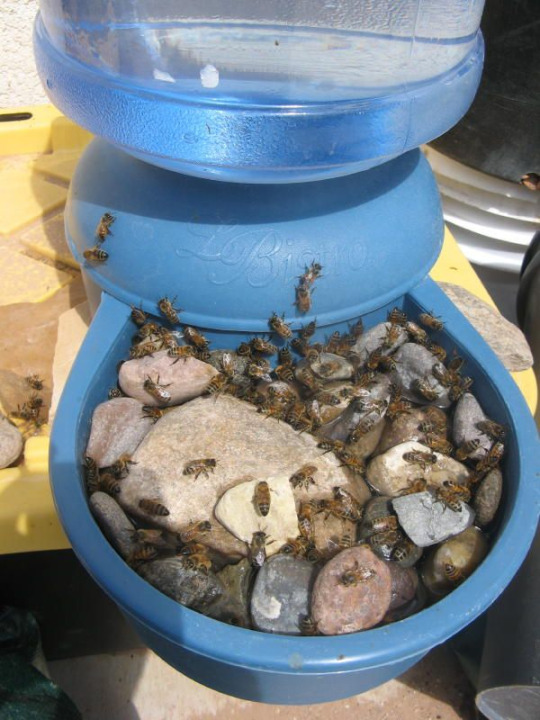
Oftentimes when I see ‘add a water source’ in informational articles about improving your backyard for wildlife, it’s almost always followed by an image of a gorgeous backyard pond with a waterfall and rock lining that looks expensive to set up, difficult to maintain, and overall just… not feasible for me. Arguably, not feasible for a lot of people. And that’s okay! There’s still ways to add water in your garden for all kinds of creatures to enjoy!
There’s tons of ways to create watering stations for insects like bees and butterflies. A self refilling dog bowl can work wonders! Add some stones into the receiving tray for insects to land on or use to climb out, and you’ve got a wonderful drinking spot for all kinds of insects! You can also fill a saucer or other dish with small stones and fill it, though it’ll likely need refilling daily or even several times a day during hot times.
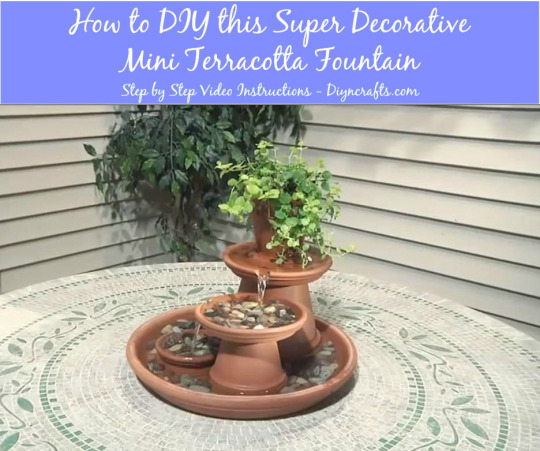
I've seen people online use all kinds of things to make water features. Some go with terra-cotta pots, pebbles, and a cheap pump to get a small and simple fountain. Others use old tires, clay, and a hole in the ground to create an in-ground mini pond system. If all else fails, even a bucket or watertight box with a few plants in it can do the trick--though do be wary of mosquitoes if the water isn’t moving. In situations like these, a solar-powered fountain pump or bubbler are great for keeping the water moving while still making it a drinking option for wildlife (it not even more appealing for some)--and these items can be obtained fairly cheap online!
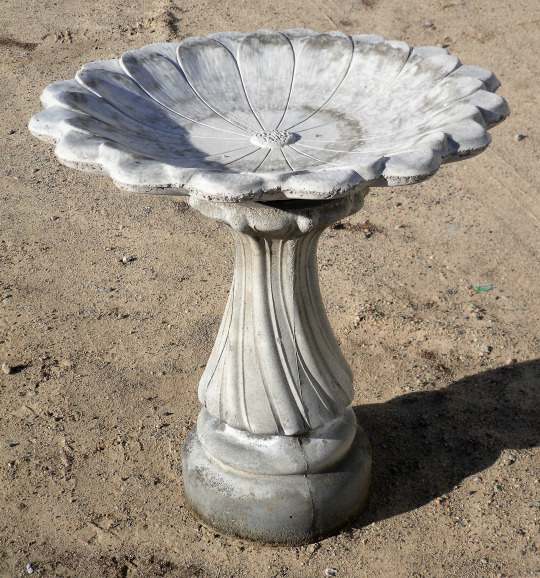
Bird baths are an option as well--a classic way to provide for birds in your area, they can be easy to find online or in a gardening store! The only downside is that a good, quality bird bath can be pricey up-front. However, a nice stone bird bath should last a long time, be easy to clean and refill, and be enjoyed by many birds! I’ve also seen tutorials on how to make your own with quickcrete! Bird baths will be a welcome sight to birds, as they provide a space for them to drink and bathe to regulate the oils in their feathers for flight and insulation. Putting a stone in the middle will also help insects to escape if they fall in, and provide a place to perch so they can get their own drink. You’ll want to change the water and clean the baths regularly--as often as once a week, if you can manage it.
If possible, it’s highly encouraged to fill and refill water features with rainwater instead of tap water. Tap water is often treated, so instead of using hoses or indoor kitchen water, collecting some rainwater is a great alternative. Collecting rainwater can be as simple as leaving cups, bins, or pots outside for awhile.
Butterflies and other creatures will also drink from mud puddles. If you can maintain an area of damp soil mixed with a small amount of salt or wood ash, this can be fantastic for them! Some plants also excel at storing water within their leaves and flowers (bromeliads come to mind), making them an excellent habitat for amphibians as well as a drinking spot for insects and birds.
Bird Feeders and Bird Houses

Some of the fancy, decorated bird feeders are expensive, but others can be pretty low-cost--I got my bird feeder from Lowe’s for around 10 dollars, and a big bag of birdseed was around another 10 dollars and has lasted several refills! If you don’t mind occasionally buying more birdseed, a single birdfeeder can do a lot to attract and support local birds! If you’re handy, have some spare wood, and have or can borrow some tools, you may even be able to find instructions online to make your own feeder. You may not even need wood to do so! Even hummingbird feeders, I’ve found, are quick to attract them, as long as you keep them stocked up on fresh sugar water in the spring and summer!
An important note with bird feeders is that you have to make sure you can clean them regularly. Otherwise, they may become a vector for disease, and we want to avoid causing harm whenever possible. Also keep an ear out and track if there’s known outbreaks of bird diseases in your area. If local birding societies and scientists are advising you take your birdfeeders down for awhile, by all means, do it!

Bird houses are naturally paired with bird feeders as biodiversity promoters for backyard spaces, and it makes sense. Having bird houses suited to birds in your area promotes them to breed, raise their young, disperse seeds, and generally engage in your surrounding environment. Setting them up takes careful selection or construction, preparation, and some patience, but sooner or later you might get some little homemakers! Keep in mind, you will need to clean your birdhouses at least once a year (if not once per brood) to make sure they’re ready and safe for birds year after year--you wouldn’t want to promote disease and parasites, after all. But they could be a valuable option for your landscape, whether you purchase one or construct your own!
Again, do make sure you're putting up the right kind of boxes for the right kinds of birds. Bluebird boxes are some I see sold most commonly, but in my area I believe they're not even all that common--a nesting box for cardinals or chickadees would be far more likely to see success here! And some birds don't even nest in boxes--robins and some other birds are more likely to use a nesting shelf, instead! Research what birds live in your area, take note of any you see around already, and pick a few target species to make homes for!
Solitary Bee Houses

A bee house or bee hotel is a fantastic way to support the solitary bees in your area! For a few dollars and some annual cleaning, you can buy a solitary bee house from most big box nurseries. Alternatively, you can make one at home, with an array of materials you may already have lying around! You can even make them so that they’ll benefit all kinds of insects, and not necessarily just bees.
Though you don’t even necessarily have to break out the hammer and nails, buy a ton of bricks, or borrow a staple gun. Making homes for tunneling bees can be as simple as drilling holes in a log and erecting it, or drilling holes in stumps and dead trees on your property. You might even attract some woodpeckers by doing this!
Providing Nesting Area
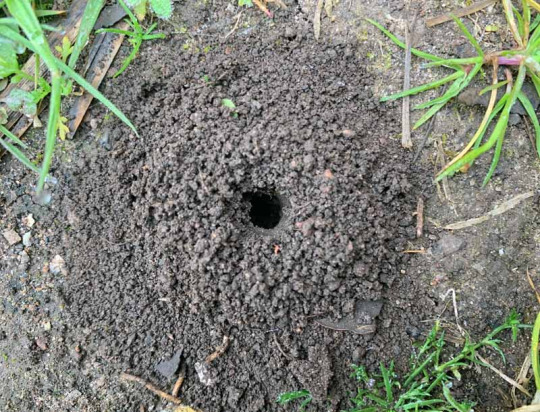
There are tons of different kinds of bees, and they all make different kinds of homes for themselves. Not all of them make big cavity hives like honey bees, or will utilize a solitary bee house. Bumblebees live in social hives underground, particularly in abandoned holes made by rodents--some others nest in abandoned bird nests, or cavities like hollow logs, spaces between rocks, compost piles, or unoccupied birdhouses. Borer, Ground, and Miner bees dig into bare, dry soil to create their nests. Sparsely-vegetated patches of soil in well-drained areas are great places to find them making their nests, so providing a similar habitat somewhere in the garden can encourage them to come! I do talk later in this document about mulching bare soil in a garden--however, leaving soil in sunny areas and south-facing slopes bare provides optimal ground nesting habitat. Some species prefer to nest at the base of plants, or loose sandy soil, or smooth-packed and flat bare ground. They’ve also been known to take advantage of soil piles, knocked over tree roots, wheel ruts in farm roads, baseball diamonds and golf course sand traps. You can create nesting ground by digging ditches or creating nesting mounds in well-drained, open, sunny areas with sandy or silty soil. However, artificially constructed ground nests may only have limited success.
Providing Alternative Pollinator Foods
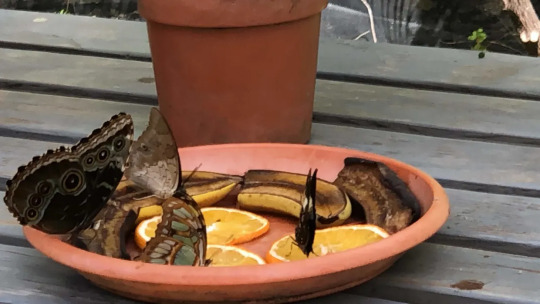
Nectar and pollen aren’t the only foods sought out by some pollinators! Some species of butterflies are known to flock to overripe fruit or honey water, so setting these out can be an excellent way to provide food to wildlife. You may want to be cautious about how you set these out, otherwise it can help other wildlife, like ants or raccoons. Butterflies may also drop by to visit a sponge in a dish of lightly salted water.
Bat Houses and Boxes
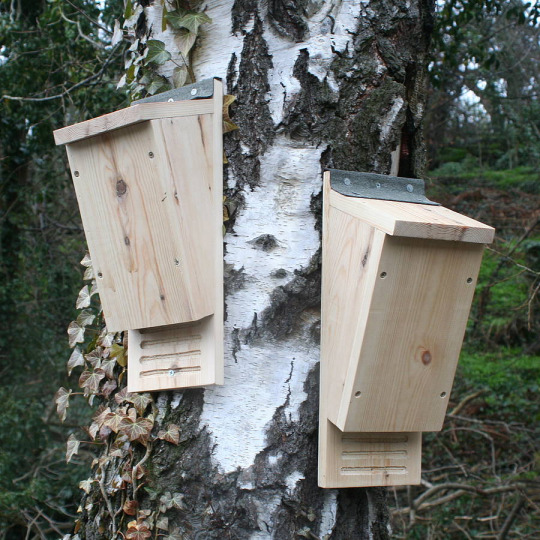
Big or small, whether they support five bats or five hundred, making bat boxes and supporting local bats is a great way to boost biodiversity! Not only will they eat mosquitoes and other pest species, but you may also be able to use the guano (bat droppings) as fertilizer! Do be careful if you choose to do that though--I’ve never had the opportunity to, so do some research into how strong it is and use it accordingly.
Provide Passageway Points
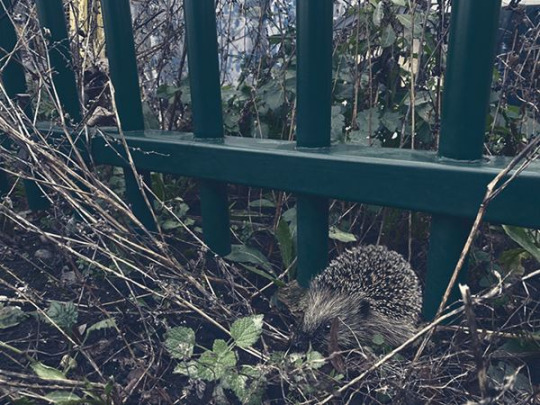
If you want your area to be more accessible for creatures that can’t fly or climb fences, allowing or creating access points can be an excellent way to give them a way in and out. Holes in the bottom of walls or fences can be sheltered with plants to allow animals through.
In a somewhat similar manner, if you’re adding a water fixture, it’s important to provide animals a way to get into and out of the pond--no way in, and they can’t use the water. No way out, and they may drown. Creating a naturalistic ramp out of wood beams or sticks, or stepped platforms out of bricks, stones, or logs can do the trick.
Get or Keep Logs and Brush Piles

I’ve already mentioned logs a good handful of times so far in this post. To be used as access ramps, or as nesting areas for solitary bees. But they have value as much more than that! Logs on the ground provide shelter for all kinds of animals, especially depending on size--anything from mice, reptiles, and amphibians to things like turkey vultures and bears will use fallen logs as shelter. Inside of a decaying log, there’s a lot of humidity, so amphibians are big fans of them--meanwhile, the upper sides of them can be used as sunning platforms by things like lizards. Other animals can also use the insides of logs as nest sites and hiding places from predators too big to fit inside. Fungi, spiders, beetles, termites, ants, grubs, worms, snails, slugs, and likely much more can be found inside rotting logs, using the rotting wood as food sources or nesting places. They can then provide food for mammals, amphibians, reptiles, and birds. They can also be regarded as a landmark or territory marker as wildlife get more familiar with your space.
So how do you get logs for cheap? Try Chip Drop! I talk about them more in a future post, but you can mark saying that you’d like logs in your drop, so they’ll give you any they have! In fact, you may even get a drop faster if you're willing to accept some logs. You may also be able to approach arborists you see working in your area and ask for logs. There may also be local online listings for people selling logs for cheap, or just trying to get rid of them. If there’s land development going on near you, you may be able to snag logs from trees they cut down to make space. Do keep in mind, you don’t need to have huge gigantic logs laying around your property to make an impact--even small logs can help a lot.

If possible, creating and leaving brush piles on the edge of your property can be a great boost to biodiversity--even if you may not see the wildlife using it. They’ll provide shelter from weather and predators, and lower portions are cool and shady for creatures to avoid the hot sun. The upper layers can be used as perch sites and nest sites for song birds, while lower layers are resting sites for amphibians and reptiles, and escape sites for many mammals. As the material decays, they also attract insects, and as such they’ll attract insect-eating animals too. As more small animals find refuse in your brush pile, their predators will be attracted to them as well. Owls, hawks, foxes, and coyotes are known to visit brush piles to hunt. Making a brush pile can be as simple as piling branches and leaves into a mound, as big or as small as you want. You can even use tree stumps or old fence posts near the base, and keep stacking on plant trimmings and fallen branches. Do note that you don’t want to do this near anything like a fire pit.
Don't forget, with all of these, your mileage may vary for any variation of reasons, so don't worry if you can't take all of even any of these actions! Even just talking about them with other people may inspire someone else to put out a bat box, or leave a few logs out for wildlife!
That's the end of this post! My next post is gonna be about ways to get seeds and plants as cheaply as possible. For now, I hope this advice helps! Feel free to reply with any questions, success stories, or anything you think I may have forgotten to add in!
#biodiversity#solarpunk#environmental stewardship#gardening#outdoor gardening#(i know this is literally the Dont Gotta Garden post but these could also be excellent additions to a preexisting garden so)#ani rambles#out of queue#the biodiversity saga#here in the tags to once again emphasize your mileage may vary with all of these#my mom is scared of bats theres no way in hell shes gonna let me put up a bat box#but I have been able to put out a shallow bird bath and a little solarpowered hummingbird bath fountain#do what you can! every bit counts! You may be able to do something that I or your neighbors can't!#for example my nextdoor neighbors have literally no trees in their backyard where the hell would they put a bat box#meanwhile i have trees in my backyard but still can't put up a bat box. maybe the neighbors next to me could!#similarly brush piles are a no go for my family but someone somewhere else could set one up!#i am rambling in the tags now uh long story short do what you can don't stress about what you can't
4K notes
·
View notes
Text

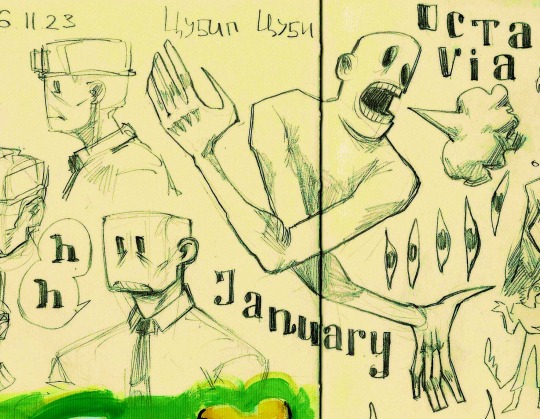
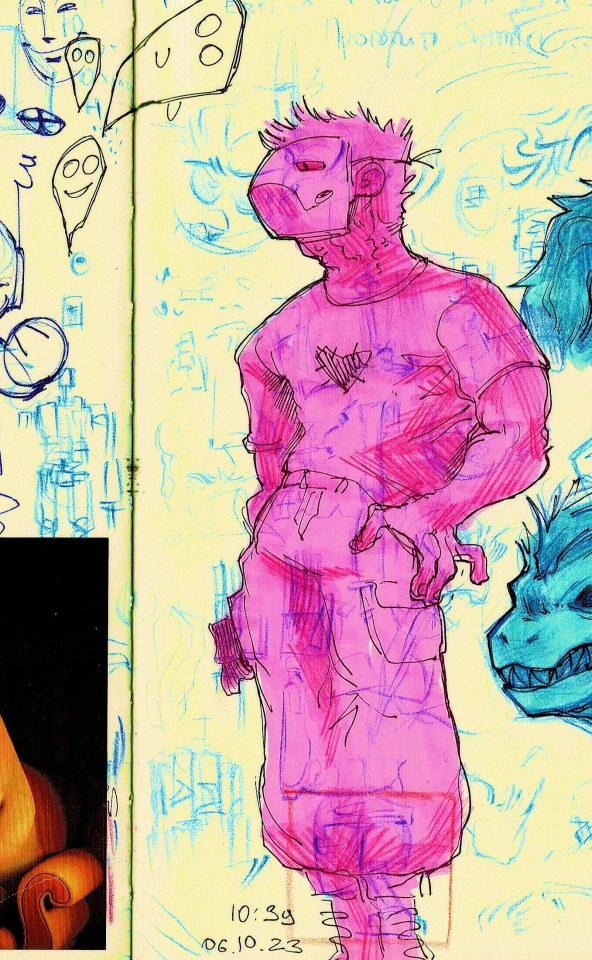



quess who remembered that they have social media
#me. i did.#i uh. i'll queue some posts ig#off the game#off mortis ghost#elsen#zacharie#off batter#off january#my art#sketchbook#traditional art
761 notes
·
View notes
Text

just guys being guys [x]
#KILLING EVERYONE#anthony green#i think ill put this one in the daily anthony queue as well so i can be reminded of it in. uh like over 6 months. heheheh
1K notes
·
View notes
Text
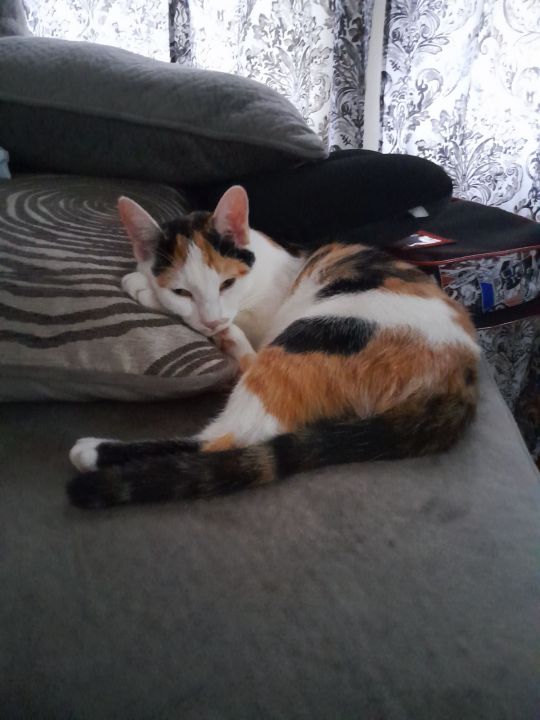
I dont have a clever and witty sarcastic comment tonight, I just think she's cute
#my brain isnt working rn its 3am ive been reading fanfics while hyperventilating over the irreparable damage i managed with my limited life#tee hee im just kinda feeling moody tonight 🤪#somebody please ban me from tumblr between 1am to 11am i do not function as a stable person between those times#i schedule my mental breakdowns they work really well with my schedule#its multitasking cause I'll already be up from insomnia its really efficient in the grand scheme of things#ah i love the fact that nobody can stop me from writing the most deranged shit in the tags of a cute cat pic <3#animals#petblr#cat#cat life#cat lovers#catblr#my cat#cat photos#cat pictures#cats of tumblr#calico#calico cat#OH UH THATS WHAT I WAS SUPPOSED TO SAY FOR AMERICANS THE REASON IM SAYING ITS NIGHT WHEN THIS IS POSTED DURING THE DAY IS BECAUSE ITS QUEUED#i queue most stuff because i dont usually have the energy or time to be active at good times#i get little bursts of post motivation and dont wanna flood my 9 followers (at least 6 are dirty bots) with my bs#im just a dumbass that never tags shit
583 notes
·
View notes
Text
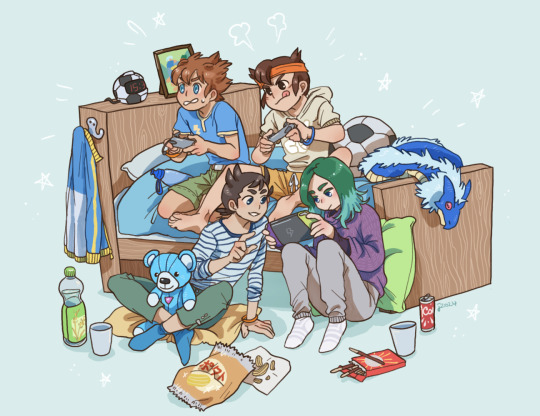
happy ina11VR beta test day!! have fun!
#inazuma eleven#inazuma eleven go#inazuma eleven ares#uh.. how do I tag ares/orion in one tag... sth to figure out later#inazuma eleven vr#so excited!!! finally new inazuma!!!#actually drew this like three hours before the beta date reveal but decided to queue for today lol#spot the secret 5th protagonist in the picture
180 notes
·
View notes
Text




a buncha horrible sprite edit things i made recently
#pizza tower#peppino spaghetti#the vigilante#snick#well the exe version of him but uh yea#sprite edit#pizza queue
1K notes
·
View notes
Text
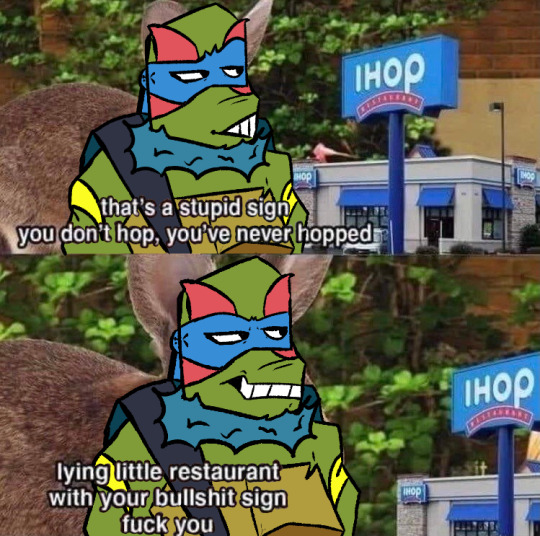
*hands you badly drawn meme redraw and runs*
oh also @tmntaucompetition hi
☆ Hop!Leo masterpost | original meme ☆
#rottmnt#unpause rottmnt#unpause rise of the tmnt#rottmnt leo#dimension hopper leo au#rise leo#meme redraw#nighty arty#a pie for you & a queue for me#i have the bad trait that is called i cant stop entering everything that is called a competition or challenge etc#so uh. throws the au in the wild au seas#...the au is basically this happening to leo anyways lol#tmnt au#rottmnt au#i like adding tags#cw swearing
245 notes
·
View notes
Text
my dad went to the library to get some books (his goal is to read more this new year) and he brought me back a lil announcement abt a 'bring your own craft' kinda event that happens every Friday from 10 to 12
on the one hand: possibly a cool way to make crafting friends, get out of the house, go to the library more often
on the other hand: the odds of me being conscious before 12pm most of the time is Extremely Low
#out of queue#ani rambles#'ani why are you mentioning this here' idk it feels tangential#its like. i wanna join communities and meet people and have fun#but also i am A: shy and B: sleepy and lazy as hell#like literallly the main thing holding me back from committing to going At Least Once is that A: oh no new people scary#but also mostly B: i dont think i even CONSIDERED getting out of bed until 12pm today and thats EARLY for me#all this to say. uh. thoughts and prayers for your local shy ass nerd i guess
240 notes
·
View notes
Note
How would the sanses react when they kill some random human (cause they agitated them or something) and that mf just stands back up and goes on about their day as if a bone didnt just pierce their heart.





Nightmare, absolutely flabbergasted: ———
Killer, upset and confused: ...huh
Dust, offended: i-
Horror, absolutely horrified: WH
Cross, terrified: (meme)
(designs from start of blog used)
#nightmare sans#killer sans#dust sans#horror sans#cross sans#death#Horror knows EXACTLY where a human needs to be hit to die so he is NOT happy with the human living and? walking away??#you can't prove i used a meme to avoid drawing Cross#nuh uh.......#queue
238 notes
·
View notes
Text
cutest in the world

this set in the same AU as overdue honeymoon
#togachako#ochatoga#uraraka x toga#bkdk#bakudeku#ktdk#katsudeku#mini comic#bnha#mha#mha 364#bnha 364#mha spoilers#paint tool sai#overdue honeymoon au#vampire toga himiko#vampire hunter bakugou katsuki#mimithealpaca#omg i was going to queue this for the weekend but it didn't work so uh spoilers for now
447 notes
·
View notes
Text

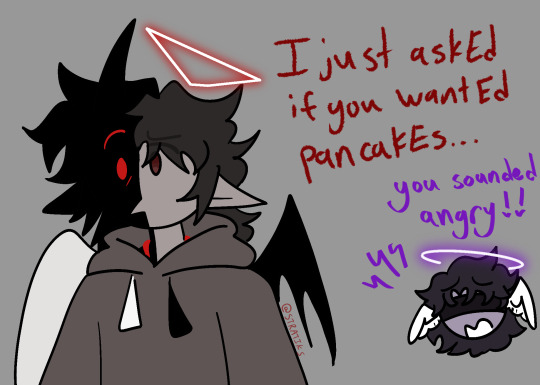
shout out to the fellas who can’t help but assume everyone is mad at them if they even sound slightly upset (it’s me i’m the fellas)
#shep arts#chonnys charming chaos compendium#chonny jash#cj mind#cj heart#cj soul#posts from the queue#havent drawn in a bit so we’re easing into it with stupid shit lol#sorry i disappeared for forever btw I was hit by art block pretty hard :/#they’re all still plain greys btw i just used some color overlays so heart and mind would stand out from eachother since there’s no shading#any other differences from old art of them is just uh becuz i literally cannot have one set design for any character ever#anyway i thought itd be fun to distinguish what they were saying in more ways then just color so yeahh#mind is all caps. heart is all lowercase. and uh soul is normal except his e’s are always capitalized#thought itd be funny to do that cause it looks like trident :]c#i would've taken it one step further and made Soul's e's look like -E but then my friend reminded me that feferi existed...#didn't want to steal from her typing quirk lol + i would totally forget to make em -E so i settled for just making em capitalized
169 notes
·
View notes
Photo



A6 Cards for my friends i sent around new year ^^ !
(copic sketch, posca, pilot g-tec c4, pencil)
#my art#suji queue#genshin#genshin impact#ningguang#beidou#kaveh#tighnari#cyno#tighcyno#beiguang#the last one uh#not tagging#not my interest
742 notes
·
View notes
Text



#My sister sent this textpost to me specifically so I couldn't help it#They really went through every phase uh. I wonder what's to come next uh.#atsushi nakajima#ryūnosuke akutagawa#sskk#shin soukoku#bsd#bungou stray dogs#bsd memes#mine#q.#13/04/23#I'm too tired to properly go with the usual queue today but take this from my drafts
785 notes
·
View notes
Text
How to Increase Biodiversity on a Budget - Masterpost
It cannot be stressed enough that supporting native wildlife is important, wherever you are and however you can. But it can feel a bit daunting to think about doing, especially if you’re operating on a smaller budget. It’s not uncommon to hear about someone’s success story and think how much did it cost to do that?
I’m hoping that I can provide a good bunch of ideas on how to help heal the world around you without hurting your wallet. Feel free to use this as a guide, or a bouncing-off point to do actions in your own style!
Before we get Started
I want to make it clear that this is not a checklist of things you are required to do in order to be ‘helping.’ This isn’t an ‘all or nothing’ kind of deal. Every little bit you do helps. Being aware of these options and spreading awareness helps. Doing even just a handful of these options as you’re able to helps.
With that being said, we need to acknowledge that not everything in this list is feasible for everyone. Some people have a fenced yard in the suburbs. Some people have an unfenced yard with judgy neighbors and/or a restrictive HOA policy. Some people can’t directly control their own landscaping, whether that be because of an external lawn maintenance ruling or something like ‘living with your parents.’ Some people have a 4th story apartment with a small balcony. Some people rent and can’t grow directly into the ground. If the best you can do is put up a bird feeder, or grow a few pollinator-friendly plants in pots? I see you. I feel you. I’ve been there. I appreciate what you’re doing, and you know what? So does the wildlife.
Un-actions, or Restriction of Activities
Things to Do that Aren’t Related to Growing Plants
The Plants-Related Section
Adding To, or Starting, A Garden
Cheaply Starting
Supporting Your Plants for Cheap: Composting, Mulching, and Trellises
What Plants to Add
What to Do Once Things Are Planted
The Secret Other Thing - Managing Invasive Plants and Animals
Parting Words and Sources
If you’re interested in joining a group of gardening enthusiasts who are always down to talk about biodiversity, project ideas, and native plants, feel free to hop into my gardening discord!
#gardening#biodiversity#outdoor gardening#cheap gardening#solarpunk#idk what else to tag this as#I'm gonna post one or two of my pieces every day because. uh. it's a lot. and i gotta doublecheck for quality#but I'll link them all on THIS POST as I add them#ani rambles#out of queue#the biodiversity saga#editing the tags because I said 'im gonna post one or two a day' LMFAOOOOO#OK EVERYONE ITS DONE ITS OFFICIALLY DONE FEEL FREE TO GO HAM
450 notes
·
View notes
Note
what is your opinion on barty and evan using nicknames or pet names? rosie? bee? bat? ev? evs? babe? love? what are they calling each other in your mind?????
im thinking of one of nabokov's letters to vera, where he says: "You can be bruised by an ugly diminutive — because you are so absolutely resonant — like seawater, my lovely"
that's how i see most rosekiller nicknames.... "rosie" is the undefeated classic, and i like it for being a little old-fashioned? barty uses nicknames to harangue/be annoying ("babe" "blondie"), but i think the ones he uses SINCERELY are very different. the way barty uses pet-names is fretful & uncharacteristically sweet.. "petal" is good. "little one" is something that slips out in private ("have you eaten, little one?")
evan isn't a nickname person to me. the transition from "crouch" -> "barty" is already a big enough deal. anything cloying grates on him. but i picture terms of endearment slipping out of him when he's tired or really worked up. i picture him using one (sweetheart? pet?) when tugging at barty's sleeve, frowning & quietly asking him for something (the something is: exhuming a diseased corpse from nearby gravesite)
#a#I also believe barty calls whoever he is fucking “bunny” in bed. but uh. um. I won't speak....#I could see barty using possessive ones as well. “doll/dollie” “pretty thing” etc etc#rose & thorn#sweetest tongue has sharpest queue
112 notes
·
View notes
Text
How're y'all's "the fears are desires now" theories holding up after this episode?
#i was wondering if the jonny and alex episode would have more lore than the rest and uh#id say yeah#the magnus protocol#tmagp spoilers#6 introductions#magnus protocol speculation/analysis#my magnus protocol stuff#original post#queue cause i'll be at work when the episode airs
83 notes
·
View notes